Spectrum Summary: Developments under Nehru’s Leadership (1947–1964) | History for UPSC CSE PDF Download
Developments under Nehru’s Leadership (1947-1964)
Jawaharlal Nehru, serving as the inaugural Prime Minister of independent India, played a pivotal role in shaping the nation's trajectory during the 'Nehruvian Era' from 1947 to 1964. His leadership, alongside other prominent figures, laid the foundational principles for the newly independent country.
Nehru's ideological influences were diverse, ranging from his exposure to European thought to his close association with Mahatma Gandhi. These influences manifested in his commitment to democracy, secularism, and social justice. Nehru envisioned a modern and progressive India, marked by a scientific and technological outlook.
 Jawaharlal NehruHis efforts went beyond political governance, as he sought to create an institutional framework conducive to the rapid development of a nation characterized by immense diversity. Nehru's emphasis on science and technology reflected his commitment to adapting modern ways of thinking to Indian conditions, fostering a scientific temper essential for the country's growth.
Jawaharlal NehruHis efforts went beyond political governance, as he sought to create an institutional framework conducive to the rapid development of a nation characterized by immense diversity. Nehru's emphasis on science and technology reflected his commitment to adapting modern ways of thinking to Indian conditions, fostering a scientific temper essential for the country's growth.
Following is a concise overview of various events and facets of the Nehruvian era.
Political Developments
- In the inaugural general elections of 1952, the Congress party secured a substantial majority, paving the way for Jawaharlal Nehru to assume leadership of the government at the Centre.
- Jawaharlal Nehru continued to lead the Congress to significant electoral victories in 1957 and 1962, although the winning majority experienced a decline toward the end of his tenure.
- The year 1952 saw the election of Rajendra Prasad as the first President of India, with the electoral college of the initial Parliament participating in the process. Concurrently, S. Radhakrishnan was elected as the vice president.
- Following two terms as president, Rajendra Prasad retired in 1962, leading to the election of S. Radhakrishnan as the next president.
- During the Nehruvian era, Parliament enacted notable legislation aimed at fostering social change and equity.
Debate over National Language
At Independence, India had eleven major languages, each spoken by over a million people.
During colonial rule, English served as the official language, prompting discussions on a post-independence 'national' or 'official' language to replace English.
Gandhi advocated for Hindustani, a blend avoiding excessive Sanskritisation or Persianisation, as the national language, a view Nehru also supported.
Resistance to the idea of Hindi as the national language arose from non-Hindi-speaking regions.
 Mahatma Gandhi
Mahatma Gandhi
The Constituent Assembly's Language Committee proposed a compromise: Hindi in Devanagari script as the 'official' language with a gradual transition. English would remain the official language for the first fifteen years.
In 1963, the Official Languages Act aimed to make Hindi the official language from 1965, but English retained the status of an 'associate additional official language' for non-Hindi speakers.
Violent demonstrations in 1964-1965 led to the Official Languages (Amendment) Act of 1967, introducing bilingual communication (English-Hindi) between the Centre and states.
Regional languages gained recognition in provincial administration and public service examinations.
Linguistic Reorganisation of the States
The demand for the reorganization of states based on language emerged from India's linguistic pluralism. Colonial boundaries were drawn for administrative convenience or coincided with territories annexed by the British or ruled by princely states.In 1920, Congress recognized regional linguistic identities, dividing India into 21 linguistic units, but after independence, national leadership opposed linguistic reorganization for the sake of unity, given the challenges of partition, economic issues, and conflicts with Pakistan.
Facing persistent demands, the Constituent Assembly appointed the Linguistic Provinces Commission in 1948, which opposed linguistic states for national integration. The JVP Report in December 1948 and subsequent committee reports, including one by Jawaharlal Nehru, did not favor linguistic states.
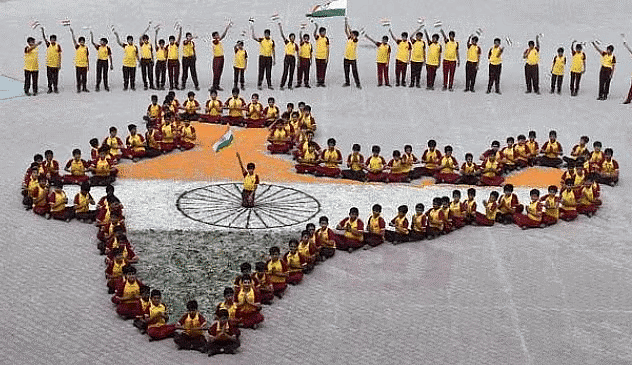 States Reorganisation Act, 1956Agitation for a separate Andhra state intensified in 1951, leading to the formation of Andhra Pradesh in 1953. The States Reorganisation Commission (SRC) in 1953 recommended 14 states and 6 centrally administered territories, with the States Reorganisation Act passed in 1956.
States Reorganisation Act, 1956Agitation for a separate Andhra state intensified in 1951, leading to the formation of Andhra Pradesh in 1953. The States Reorganisation Commission (SRC) in 1953 recommended 14 states and 6 centrally administered territories, with the States Reorganisation Act passed in 1956.
Bombay was bifurcated into Maharashtra and Gujarat in 1960. In 1963, Nagaland was inaugurated as a separate state. The linguistic principle was an exception in merging Patiala and East Punjab States Union (PEPSU) with Punjab in 1956, which remained trilingual.
The demand for a separate Punjabi-speaking state, Punjab Suba, remained unresolved during Nehru's time, later addressed by Indira Gandhi. Over the years, new states were formed, not necessarily along linguistic lines.
Growth of Other Parties
During the 1950s and 1960s, the Congress party dominated the Center and most states due to its association with the freedom struggle. However, in a notable shift, people voted for a party other than the Congress in 1957, electing Communists to power in Kerala. In 1963, opponents like socialist Ram Manohar Lohia, liberal MLR Masani, and Gandhian Acharya Kripalani were elected to the Lok Sabha, marking a growing familiarity with democratic processes in India. This period also witnessed the emergence of political parties beyond Congress and the Communist Party of India.
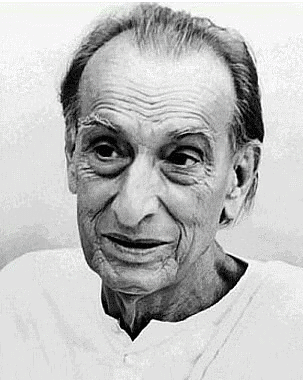 Image caption
Image caption
The Congress Socialist Party, the Praja Socialist Party, and the Samyukta Socialist Party
Formed in 1934 as the Congress Socialist Party (CSP), it remained within the Congress Party until March 1948. Dissociation from the Congress occurred in response to the perception of the party moving towards the Right and becoming more authoritarian, announced at a meeting in Nashik on March 28, 1948.
In September 1952, the CSP merged with the Kisan Mazdoor Praja Party (KMPP) to become the Praja Socialist Party (PSP), emerging as the largest opposition party to the Congress with leaders like Jayaprakash Narayan and Acharya Narendra Dev. However, internal cohesion issues arose, and in June 1983, at the Betul conference, differing opinions led to a split.
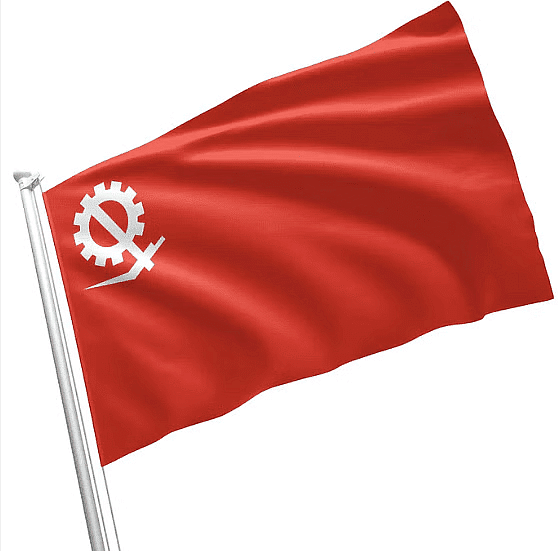 Flag of the Socialist Party
Flag of the Socialist Party
The majority rejected Asoka Mehta's approach in favor of supporting the ruling party for national development, while Ram Manohar Lohia and his supporters, advocating equal distance from both Congress and Communists, left the PSP at the end of 1955.
Key leaders such as Acharya Narendra Dev, Jayaprakash Narayan, and J.B. Kripalani had notable developments in their political journeys after leaving the PSP. Jayaprakash Narayan withdrew from active politics after the 1957 general elections, advocating for 'partyless democracy.' Kripalani left the party in 1960, and Asoka Mehta joined the Congress Party a few years later.
Lohia formed the Socialist Party, merging with the PSP in 1964 to create the Samyukta Socialist Party (SSP). In 1965, the party experienced another split, with Lohia's group retaining the SSP label and critics forming a new PSP.
The Communist Party
The Communist Party of India (CPI) underwent significant shifts in its stance:
- Initially accepted India's independent foreign policy, viewing the government as an agent of imperialism.
- Acknowledged India's sovereignty but perceived the government as pro-capitalist and anti-people.
- Proposed a 'democratic front' as an alternative to the Congress Party.
- In the 1958 Amritsar meeting:
1. Declared the possibility of advancing to socialism through parliamentary means.
2. Pledged to grant full civil liberties, including the right to oppose the government through constitutional mechanisms.
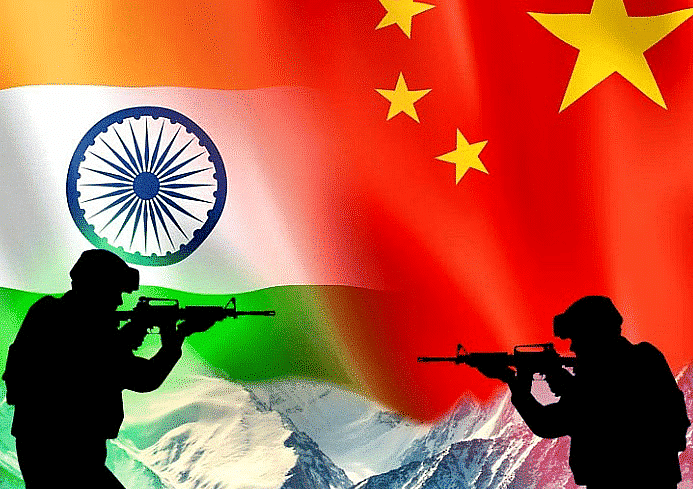 Sino-India War, 1962
Sino-India War, 1962
- Internal differences on issues like the Soviet critique of Stalin, Russia-China ideological differences, and the Sino-India War of 1962.
1. Some supported the government against the Chinese invasion, while others did not offer unqualified support.
2. Sympathies toward the Chinese in the Sino-Soviet ideological split deepened the rift. - In 1964, the party split into the CPI and the Communist Party (Marxist) or CPM.
- CPM's beliefs and approach:
1. Believed the Indian State was ruled by the big bourgeoisie collaborating with foreign finance.
2. Considered the Indian Constitution anti-democratic.
3. Rejected peaceful or parliamentary means, advocating for agrarian revolution and armed struggle by the working class for social change.
Bharatiya Jana Sangh
- Founded on October 21, 1951, the Bharatiya Jana Sangh, embracing right-wing ideology, closely aligned with the Rashtriya Swayamsevak Sangh (RSS) for organized strength and ideological consistency. Dr. Syama Prasad Mookerjee, resigned from the Nehru cabinet in April 1951 over the Nehru-Liaquat Pact, which played a pivotal role in its formation, aiming to establish a broad-based democratic opposition to the Congress.
- Initially strongly anti-Pakistan, the party focused on propagating Bharatiya culture and nationalism, advocating 'one country, one culture, one nation.' It initially favored Sanskritized Hindi as the official link language of India. However, in 1965, it moderated this demand to accommodate the party's expansion in non-Hindi states, accepting the decision to retain English alongside Hindi as long as non-Hindi states preferred it.
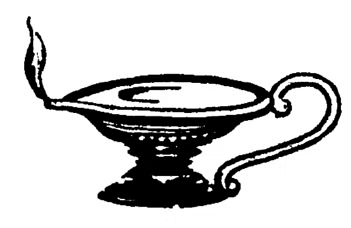 Logo of Bhartiya Jana Sangh
Logo of Bhartiya Jana Sangh
- In the 1951-52 general elections, the Jana Sangh secured only 3 Lok Sabha seats, garnering around 3% of the vote share. Syama Prasad Mookerjee, Durga Charan Banerjee, and Uma Shankar Trivedi were elected from Bengal and Rajasthan.
- Subsequently, the party transformed into the Bharatiya Janata Party (BJP) at a later stage
The Swatantra Party
- Founded in August 1959, the Swatantra Party was a non-socialist, constitutionalist, and secular conservative party. Key leaders included C. Rajagopalachari, Minoo Masani, N.G. Ranga, and K.M. Munshi, primarily veteran Congressmen. The party's social base was narrow, comprising discontented industrialists, business class opposed to government control, landlords and princes unhappy with diminishing social power, and retired civil servants.
- The Swatantra Party advocated for a 'night watchman' or laissez-faire State, minimizing the government's active role in economic development. It supported free private enterprise, opposed nationalization of private enterprises, and extended land reforms.
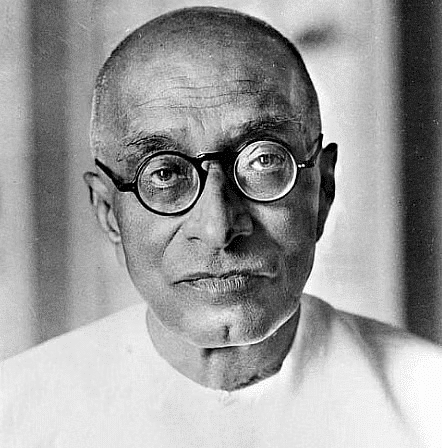 C. Rajagopalachari
C. Rajagopalachari
- Internationally, the party opposed both non-alignment and Indo-Soviet collaboration, advocating close relations with the US and Western European countries. It proposed a defense coalition with non-communist countries in Asia, including Pakistan, under US leadership.
- In the 1962 elections, the Swatantra Party secured 18 seats in the Lok Sabha, emerging as the main opposition party in four states (Bihar, Rajasthan, Gujarat, and Orissa).
- Factions, defections, and the death of C. Rajagopalachari in 1967 proved detrimental to the Swatantra Party. Most leaders joined the Bharatiya Lok Dal in 1974, while a small group led by Masani attempted to sustain the party.
Communal and Regional Parties
Founded in 1915 at Haridwar by Madan Mohan Malaviya, the Hindu Mahasabha gradually disappeared from the political scene after 1952, losing its support base to the Bharatiya Jana Sangh.
The Muslim League, initially dormant due to its association with the demand for Pakistan, saw some leaders joining the Congress Party and other parties. It later revived in parts of Tamil Nadu and Kerala, becoming coalition partners of the Congress, CPI, and CPM in subsequent years.
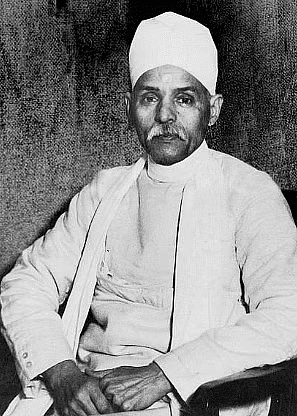 Madan Mohan Malaviya,The Akali Dal transformed into the Shiromani Akali Dal, primarily limited to Punjab.
Madan Mohan Malaviya,The Akali Dal transformed into the Shiromani Akali Dal, primarily limited to Punjab.
Other regional parties gaining prominence included the Dravida Munnetra Kazhagam (DMK) in Tamil Nadu, Jammu and Kashmir National Conference (J&K), Jharkhand Party in undivided Bihar, Ganatantra Parishad in Orissa, All Parties Hill Leaders’ Conference in Assam, Scheduled Castes Federation in Maharashtra, etc. The Forward Bloc in West Bengal and the Peasants and Workers’ Party in Maharashtra leaned towards left ideology but were confined to specific states.
An Undemocratic Deed
1. In 1957, the Congress party faced an unexpected defeat in Kerala as the CPI emerged as the largest single party in the legislative assembly. E.M.S. Namboodiripad formed the government with support from some independents, marking the first time a communist government was formed through democratic elections.
2. Trouble arose with the introduction of the Education Bill. The Catholic Church, overseeing numerous educational institutions, viewed the bill as an encroachment on its authority and opposed it. Local Congress party members seized the opportunity to organize state-wide protests, leading to lathi-charges and firing by the government.
3. Although Nehru had little objection to the Education Bill, he maintained a neutral stance in public. Eventually, succumbing to pressure within his party, then led by his daughter.
Concept of Planning for Economic Development
- Nehru advocated effective planning through the democratic process, emphasizing extensive land reforms, industrialization, and infrastructural development such as power plants, transport projects, and irrigation dams. Diverging from Gandhi's economic ideas, Nehru favored state intervention for the welfare of the population, drawing inspiration from the economic planning in the Soviet Union during the 1930s and 1940s.
- India, under Nehru's vision of 'democratic socialism,' adopted a 'mixed economy,' blending elements from both capitalist and socialist models. While much of agriculture, trade, and industry remained in private hands, the state-controlled key heavy industries, provided industrial infrastructure, regulated trade, and intervened in agriculture.
- The Planning Commission, established in March 1950, played a crucial role in economic planning through five-year plans. The First Five-Year Plan (1951-56) prioritized the agrarian sector, focusing on large-scale projects in dams, irrigation, and land reforms.
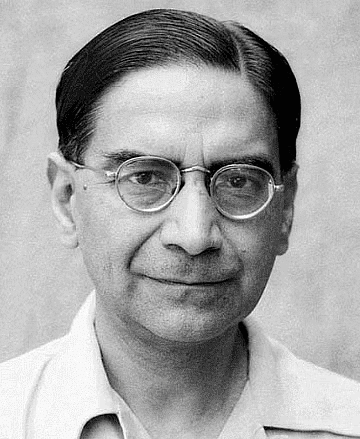 P.C. Mahalanobis
P.C. Mahalanobis
- The Second Plan, led by P.C. Mahalanobis, emphasized heavy industries, reflecting a 'socialistic pattern of society' with significant tariffs to protect domestic industries.
The Third Plan, while similar, began displaying an 'urban bias,' giving priority to industry over agriculture. - Critics argued that the five-year plans restricted the private sector's growth due to cumbersome licensing systems, leading to red tape and corruption. Sympathizers of the socialist model criticized inadequate spending on public education and healthcare by the State.
- Despite unmet targets, the five-year plans contributed to a solid industrial base and critical infrastructure. Projects like Bhakra Nangal, Damodar Valley Corporation, and Hirakud mega-dams were instrumental in irrigation and power generation. The public sector witnessed the establishment of heavy industries, including steel plants, oil refineries, manufacturing units, and defense production.
Progress of Science and Technology
Nehru prioritized science and technology for India's progress. In March 1958, the Lok Sabha passed the Scientific Policy Resolution (SPR), recognizing their pivotal role. Nehru chaired the Council of Scientific and Industrial Research (CSIR) to underscore the importance of scientific research.
Key developments in science and technology:
1. National Physical Laboratory, India's first, established in January 1947, followed by 17 national laboratories focusing on various research areas.
2. In 1952, the first of five MIT-patterned institutes of technology was established in Kharagpur.
 National Physical Laboratory3. The Atomic Energy Commission, led by Homi J. Bhabha, formed in August 1948. India's first nuclear reactor in Trombay became operational in August 1956.
National Physical Laboratory3. The Atomic Energy Commission, led by Homi J. Bhabha, formed in August 1948. India's first nuclear reactor in Trombay became operational in August 1956.
4. In 1962, the Indian National Committee for Space Research (INCOSPAR) and Thumba Equatorial Rocket Launching Station (TERLS) were established.
5. Decimal coinage and a metric system of weights and measures, aligned with international standards, implemented in phases between 1955 and 1962.
Social Developments
Developments in Education
In 1951, only 16.6% of the population was literate. Between 1951 and 1961, school enrollment doubled for boys and tripled for girls. By 1964, universities increased from 18 (in 1947) to 54.
Key developments in education:
- Indian University Education Commission was formed in 1949 under Dr S. Radhakrishnan's chairmanship.
- The University Grants Commission (UGC) was established in 1953, and the University Grants Commission Act was passed in 1956.
- Mudaliar Commission in 1952, led by Dr A. Lakshmanaswami Mudaliar, focused on improving secondary education.
- The National Council of Educational Research and Training (NCERT) was established in September 1961 as a literary, scientific, and charitable society.
Social Change Under Nehru
In 1955, the government enacted the Untouchability (Offences) Act, later renamed as the Protection of Civil Rights Act. This legislation aimed to punish the practice of untouchability, making it both punishable and a cognizable offense. The constitutional clauses related to reservations in educational institutions and government employment for weaker sections of society were effectively implemented.
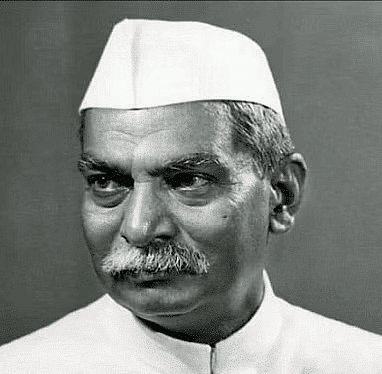 Rajendra PrasadThe Hindu Code Act of 1951 faced opposition from conservatives, including President Rajendra Prasad. However, it laid the groundwork for subsequent legislations promoting gender equality. The resulting laws included the Hindu Marriage Act of 1955, the Hindu Succession Act of 1956, the Hindu Minority and Guardianship Act of 1956, and the Hindu Adoption and Maintenance Act of 1956. These measures were instrumental in advancing the cause of women's equality in society and were championed by figures like Dr. Ambedkar and Prime Minister Nehru.
Rajendra PrasadThe Hindu Code Act of 1951 faced opposition from conservatives, including President Rajendra Prasad. However, it laid the groundwork for subsequent legislations promoting gender equality. The resulting laws included the Hindu Marriage Act of 1955, the Hindu Succession Act of 1956, the Hindu Minority and Guardianship Act of 1956, and the Hindu Adoption and Maintenance Act of 1956. These measures were instrumental in advancing the cause of women's equality in society and were championed by figures like Dr. Ambedkar and Prime Minister Nehru.
Foreign Policy
Nehru's foreign policy for India during his leadership was firmly grounded in the principles of Panchsheel and Non-alignment, as detailed in the chapter on the Evolution of Nationalistic Foreign Policy.
Throughout the Nehruvian Era, India's foreign policy was characterized by:
1. Rejection of Military Alliances: India opposed participation in any military alliances, be they bilateral or multilateral.
2. Independence in Foreign Policy: A commitment to maintaining an independent foreign policy, unaligned with major power blocs.
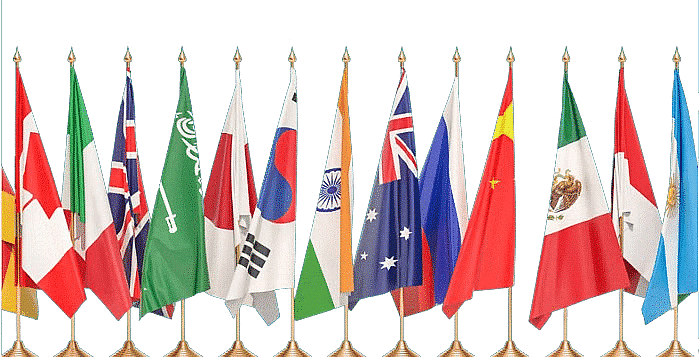 Indian Foreign Policy3. Friendly Relations with All: Advocacy for amicable relations with every nation.
Indian Foreign Policy3. Friendly Relations with All: Advocacy for amicable relations with every nation.
4. Active Anti-Colonial Stance: Support for initiatives against colonialism.
5. Open Opposition to Apartheid: Public support for policies against apartheid.
6. Emphasis on Disarmament: Prioritization of disarmament as a vital element for global peace.
India's dedication to disarmament was evident in its alignment with Article 11 of the UN Charter, advocating international disarmament. India played a pivotal role in establishing the Atomic Energy Commission in 1947 and sponsored the Conference of the Eighteen-Nation Committee on Disarmament in 1962.
Relations With Neighbours
India and Pakistan
Since the inception of India and Pakistan as separate nations, their relationship has been marked by challenges and tensions.
Kashmir Issue: Pakistan rejected Kashmir's accession to India on October 26, 1947. In response to Pakistan-sponsored tribal attacks, India, aided by the local population led by Sheikh Abdullah, swiftly took military action. However, before completing the task, Nehru complained with the Security Council in January 1948, leading to a ceasefire on January 1, 1949. Although India initially agreed to hold a plebiscite in 1947 under international supervision, it withdrew from the offer in 1955. Verbal disputes over Kashmir occurred in international forums, but no actual war transpired between the two nations until 1964.
Indus River Water Dispute: The equitable distribution of waters from the Indus system became a contentious issue post-partition. India received 5 million out of the 28 million irrigated acres by the Indus. The majority of waters from the western parts of the Indus system flowed into the Arabian Sea. Disputes arose over natural calamities like droughts and floods, with Pakistan blaming India. Under the World Bank's guidance, an interim agreement on canal waters was signed on April 17, 1959. Subsequently, a comprehensive agreement was signed on September 19, 1960, in Karachi. However, this failed to fully resolve tensions between the two nations.
India and China
Diplomatic Relations with China:
- Independent India established diplomatic ties with China under the Nationalist Government led by Chiang Kaishek.
- Recognition continued even after the Communists, led by Mao Tse Tung, took control in 1949.
- Despite India's support for China's admission to the UN, friendly relations were not achieved.
Developments in Tibet and Panchsheel:
- China's military occupation of Tibet in 1950 led to an agreement with India (Panchsheel) formalizing Chinese authority.
- In 1959, a Tibetan uprising against Chinese dominance resulted in the Dalai Lama seeking asylum in India.
- China retaliated by occupying parts of Indian territory in Ladakh and making territorial claims.
- Talks in 1960 failed to resolve border disputes between the two nations.
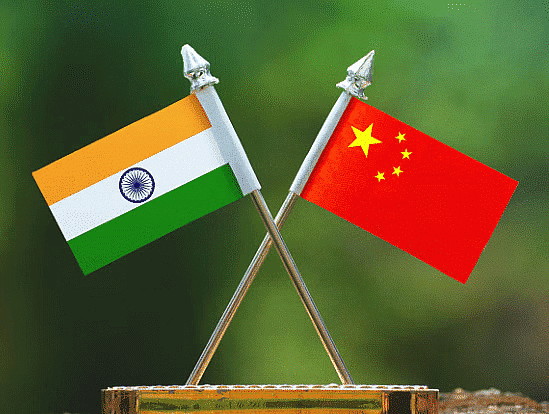
Sino-Indian War of 1962:
- China launched an attack on India in NEFA and Ladakh in October 1962.
- India suffered a military defeat, seeking assistance from the US and the UK.
- China unilaterally declared withdrawal but maintained control over parts of Ladakh.
- Diplomatic efforts, including Afro-Asian mediation, proved unsuccessful in resolving the border dispute.
- China's 1964 nuclear test heightened India's concerns.
Consequences of Sino-Indian War:
- India faced a significant blow to its self-respect due to the military defeat.
- The non-alignment policy came under scrutiny, leading to improved relations with the US and the UK.
- Congress experienced electoral setbacks, and Nehru faced the first no-confidence motion.
- Resources were diverted from the Third Five-Year Plan to bolster defense efforts.
- Pakistan, emboldened by India's defeat, launched an attack in 1965 with covert support from China.
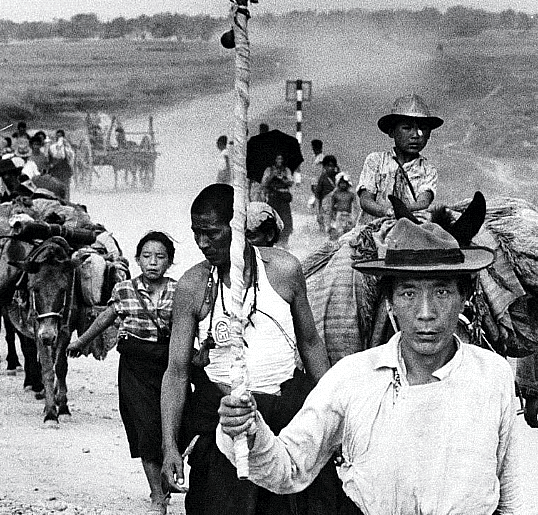 Sino-Indian War
Sino-Indian War
India and Nepal
India's recognition of Nepal's strategic significance for its external security led to the signing of a treaty between the two nations in July 1950. The treaty acknowledged Nepal's sovereignty, territorial integrity, and independence, solidifying a commitment to mutual communication in case of significant friction or misunderstandings.
India and Bhutan
- In August 1949, a perpetual peace and friendship treaty was signed between India and Bhutan.
- The treaty outlined India's commitment to non-interference in Bhutan's internal administration.
- Bhutan, in turn, agreed to follow the guidance of the Government of India regarding its external relations.
India and Sri Lanka
- The Tamil-Sinhalese riots in 1958 led to sympathy from some Indian leaders towards the Tamilian population in Sri Lanka.
- Despite this sympathy, the Indian government considered the ethnic disputes in Sri Lanka as an internal matter.
- India maintained a friendly stance towards Sri Lanka and fostered mutually beneficial economic and trade relations.
|
110 videos|652 docs|168 tests
|
FAQs on Spectrum Summary: Developments under Nehru’s Leadership (1947–1964) - History for UPSC CSE
| 1. What were the key developments in the linguistic reorganisation of states during Nehru's leadership? |  |
| 2. How did Nehru's leadership contribute to the growth of political parties in India? |  |
| 3. What were some criticisms of Nehru's policies that could be considered undemocratic? |  |
| 4. What advancements in science and technology were made during Nehru's era? |  |
| 5. What were the major social developments that occurred in India under Nehru's leadership? |  |
















